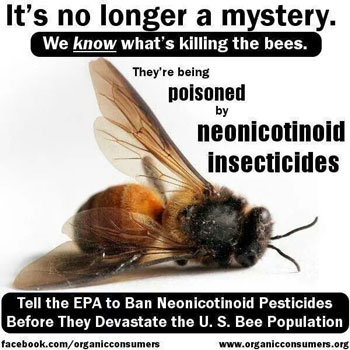Bees And Other Pollinators Are Facing Extinction ~hehe so what's the plan folks ! we just gonna wait till "they"( elites evil fucking monsters) turn THIS Planet into the fucking MOON ...that It that's "our" ....plan ? HUH
~hehe so what's the plan folks ! we just gonna wait till "they"( elites evil fucking monsters) turn THIS Planet into the fucking MOON ...that It that's "our" ....plan ? HUH

The report, released Friday by the Intergovernmental Science-Policy Platform on Biodiversity and Ecosystem Services (IPBES), is a two-year assessment of the threats facing pollinators — both vertebrates, such as birds and bats, and invertebrates, such as bees, butterflies, and other insects. It noted that, in some regions, 40 percent of invertebrate pollinator species are so threatened by myriad environmental impacts that they’re facing extinction, with butterflies and bees seeing the highest risk. Among vertebrates, 16.5 percent of species are threatened by extinction worldwide. Pollinators are a major group: there are 20,000 species of wild bees across the globe, the report notes, and many of them haven’t been identified yet.
Pollinators are also a hugely important group of animals. Almost 90 percent of wild flowering plants depend on pollination by animals, and 75 percent of food crops around the world depend on pollination. Globally, $235 – $577 billion worth of global crops are affected by pollinators each year, the report found.
“Without pollinators, many of us would no longer be able to enjoy coffee, chocolate and apples, among many other foods that are part of our daily lives,” said Simon Potts, co-chair of the assessment, said in a statement.

A hummingbird hawk-moth.
CREDIT: WIKIMEDIA COMMONS
CREDIT: WIKIMEDIA COMMONS
The organization also listed land use changes, climate change, and invasive species as threats to pollinators. Land use changes can turn wildflower-covered fields into fields of just one or two crops, a switch from a high-nutrition landscape to a lower-nutrition one. And climate change can lead to a shift in peak nectar flow for flowering plants. If managed honeybees miss this nectar flow — if they’re delivered to beekeepers too late, for instance — the hive can be weakened. The report also found that climate change has already shifted distribution of bumblebees and butterflies and pollinator-dependent plants.
The report lists several approaches to help protect pollinator populations, including creating more pollinator-friendly landscapes, with diverse flowering plants, and reducing use of pesticides by finding more pollinator-friendly forms of pest control. There are efforts to do some of these things already: last October, for instance, the U.S. Department of Agriculture set aside $4 million to help farmers, ranchers, and forest landowners plant wildflowers, native grasses, clover, buckwheat, and other pollinator-friendly plants on their lands. Scientists and beekeepers are also researching new ways to protect bees against varroa mites and other threats: beer hops have been found to repel the mites, and mushroom juice, too, could help protect bees against diseases.
The original source of this article is Climate Process

Copyright © Katie Valentine, Climate Process, 2016



No comments:
Post a Comment